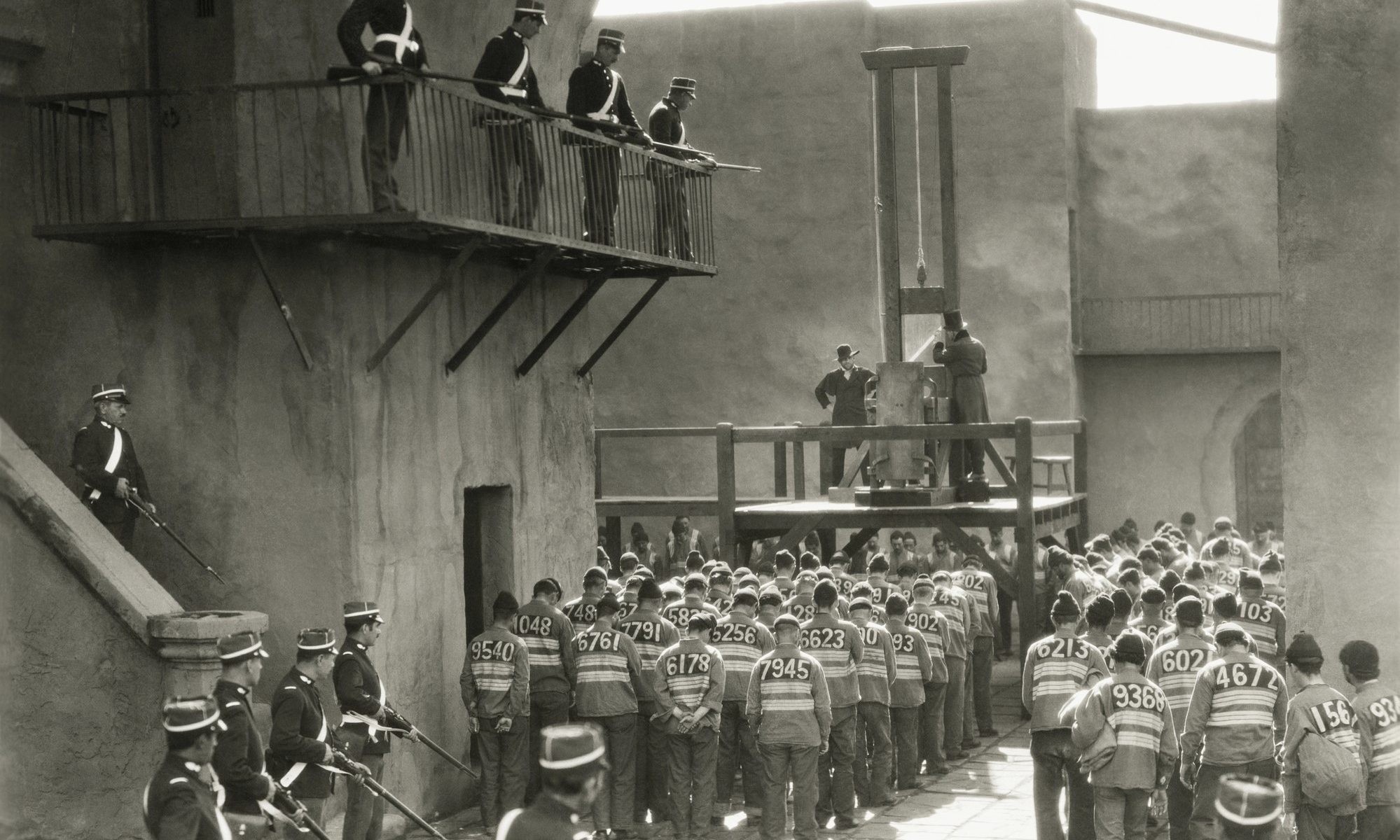On January 25th, 2024, the state of Alabama executed convicted murderer Kenneth Eugene Smith, who, in 1989, killed Elizabeth Sennett in a murder-for-hire. Unlike more commonplace or recognizable forms of capital punishment like hanging, the electric chair, or lethal injection, Smith was killed by asphyxiation. More precisely, once in the execution chamber, he was strapped to a gurney, masked, and was then fed pure nitrogen gas until dead. The use of nitrogen as a method of execution has never been used in the United States before and has caused significant consternation.
Officials predicted a quick and painless death; Smith took over 22 minutes to die, during which he gasped and convulsed. Smith’s religious adviser, Reverend Jeff Hood, who was present at the execution, said:
… we didn’t see someone go unconscious in thirty seconds. What we saw was minutes of somebody struggling for their life. We saw minutes of someone heaving back and forth. We saw spit. We saw all sorts of stuff from his mouth develop on his mask. We saw this mask tied to the gurney and him ripping his head forward over and over and over again. And we also saw correctional officials in the room, who were visibly surprised, at how bad this thing went.
The debate about whether the death penalty is justifiable is an age-old one. Proponents claim that it works as a deterrent and provides an avenue of societal retribution, while opponents argue that we risk executing the innocent and that it’s applied arbitrarily. And, while such a debate is always worth having (we’re talking about the state freely killing its citizens, after all), that isn’t what I want to explore here (but, for transparency, I fervently oppose the death penalty). Instead, I want to question, if such executions must happen, does it make a difference in what way they are done? In other words, is how one is executed a moral matter?
One intrinsic aspect of execution that undoubtedly makes the method via which it happens ethically important is the suffering involved. If process A results in an instantaneous death while method B causes hours of agony, then this is something which is a significant moral matter as we’re interested in suffering.
This does not immediately mean, however, that the latter form of execution is undeniably unethical. It could be that the very fact that it causes immeasurable pain makes it the superior option, as that painful quality is what is desired or even necessary. For example, suppose one thinks that the mere threat of execution is an insufficient deterrent to prevent the worst crimes society has to offer. In that case, one might be convinced that painfully executing criminals is the preferable option. That, between a choice of painless or painful execution, the former is ineffective, so the latter becomes pragmatically, and thus ethically, justified.
If I might, however, I would like to park this aspect of the discussion. What I want to explore is not whether pain’s presence or absence makes a method of execution ethically (un)justifiable, as this focuses on pain itself. Rather, I want to stick with the execution method. So, for the sake of argument, let’s go forward on the premise that the executions under question cause an equivalent degree of suffering – be that lots or little.
So, if it is not pain that matters here, what else could it be? Well, I think something should be said about each method’s symbolism. That is, what each way of executing says about the society in which such state-sanctioned killing is conducted and how that community views the value of life and the transition into death. To illustrate this point, let’s compare two forms of execution that have been used over history: hanging and lethal injection.
Hanging has been, historically, at least, a public affair. Or, to put it more accurately, it has not been a method of killing that was seen as inherently private. Watching people die at the end of a rope has been used as a critical form of deterrent for centuries – be that during America’s expansion into the West or during the Salem Witch Trials. It was a visual form of punishment which was meant as much for those in attendance as it was for the poor soul being killed. It was a method of state-sanctioned killing that, I would argue, disregarded the value of the individual. Upon being sentenced (if such a formal process even occurred), it turned them from a member of a society – with an internal world and rights and duties – to a tool via which the desired norms of that time could be reinforced. Put simply, they went from being a person to being an example. Execution wasn’t something to be ashamed of; the only shame was being the one executed.
Fast-forward to today, and the most common method of execution, at least in the U.S., is lethal injection. The process in which this is done, however, stands in stark contrast to that of hanging, with obscurity built into the very way it is conducted. Indeed, those responsible for killing the person are typically unaware they are responsible, as they sit separate from the execution chamber itself and work in conjunction with other executioners who are also in the dark. There is also a limited number of individuals present at the execution. While this varies according to jurisdiction, it usually features those close to the victim, those close to the convicted, a religious representative, a lawyer, and prison staff. Unlike hanging, it is typically a solemn, private affair (despite the media attention they often receive).
This change in method, from a public spectacle to a clinical activity, reveals something interesting about capital punishment’s societal placing. It is no longer something to be showcased or proud of. Instead, it is (considered by some) an instrument of justice required to ensure that society is protected from the worst parts of itself. It is more of an administrative activity that, despite some vocal advocacy, seems to carry a sense of shame.
I think this change – from skeptical to duty, from event to task – indicates something different about the methods of execution. The publicity of hanging erodes the individual’s worth and turns them into a tool for reinforcing state (or whichever sovereign at that point) power. The comparatively private nature of today’s executions has a seemingly lesser effect.
Now, there is certainly a point at which trying to differentiate the methods of execution, perhaps even grade them, becomes pointless. Looking for ethical distinctions between using nitrogen and argon to execute prisoners is an exercise in futility. It makes no difference to those in attendance, those reporting on it, and most certainly to the person dying. And I want to reiterate, I think capital punishment is always unjustified (and I may write another piece about why).
Yet, it does seem to me, for reasons that I am yet to grasp fully – although I have tried a little here – that different execution methods are ethically distinct beyond simple comparisons of how much suffering they may or may not cause. That, when it comes to the state exercising its ultimate punishment, how one dies is important and needs discussing.
P.S. On a personal note, I’ve stood inside Texas’ execution chamber, and it is one of the worst places I’ve ever been.


